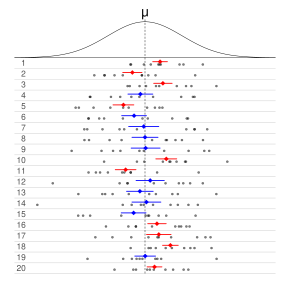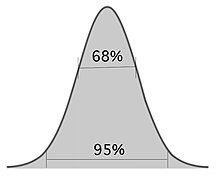Definition and Purpose of Confidence Intervals
- A confidence interval is an interval that is expected to typically contain the parameter being estimated.
- It is used to estimate the true value of a parameter with a certain level of confidence.
- The confidence level represents the proportion of confidence intervals that theoretically contain the true value of the parameter.
- Common confidence levels are 95% and 99%.
- The width of the confidence interval is affected by the sample size, variability in the sample, and the chosen confidence level.
- Confidence intervals provide a range of values within which an unknown population parameter is likely to fall.
- They are used to estimate the precision of sample statistics and make inferences about the population.
- Confidence intervals are expressed as a range with an associated level of confidence.
- They are commonly used in hypothesis testing and statistical analysis.
- Confidence intervals help to quantify the uncertainty in statistical estimates.
Desired Properties of Confidence Intervals
- Validity: The confidence interval should have a coverage probability (confidence level) that holds exactly or approximately.
- Optimality: The rule for constructing the confidence interval should make optimal use of the information in the dataset.
- Invariance: The method used for constructing a confidence interval should provide equivalent results for different representations of the parameter being estimated.
Methods of Derivation for Confidence Intervals
- Summary statistics: Confidence intervals can be constructed using summary statistics such as the sample mean and sample variance.
- Likelihood theory: Confidence intervals can be derived based on the maximum likelihood principle.
- Estimating equations: Confidence intervals can be constructed using estimates derived from estimating equations.
- Hypothesis testing: Confidence intervals can be constructed based on hypothesis tests for general values of a parameter.
- Bootstrapping: Resampling methods can be used to construct confidence intervals when distributional assumptions are uncertain or violated.
Central Limit Theorem and Confidence Intervals
- The central limit theorem states that the average of a large number of independent and identically distributed random variables approximately follows a normal distribution.
- Confidence intervals can be constructed based on the central limit theorem, regardless of the underlying distribution of the random variables.
- The approximation of the normal distribution improves with the square root of the sample size.
Interpretation of Confidence Intervals
- Confidence intervals represent a long-run frequency in repeated samples.
- There is a probability that a future sample's confidence interval will cover the true value.
- Confidence intervals can be interpreted in terms of statistical significance.
- Confidence intervals can be understood as values not significantly different from the point estimate.
- The interpretation of confidence intervals can vary depending on the perspective.
This article has multiple issues. Please help improve it or discuss these issues on the talk page. (Learn how and when to remove these template messages)
|
Informally, in frequentist statistics, a confidence interval (CI) is an interval which is expected to typically contain the parameter being estimated. More specifically, given a confidence level (95% and 99% are typical values), a CI is a random interval which contains the parameter being estimated % of the time. The confidence level, degree of confidence or confidence coefficient represents the long-run proportion of CIs (at the given confidence level) that theoretically contain the true value of the parameter; this is tantamount to the nominal coverage probability. For example, out of all intervals computed at the 95% level, 95% of them should contain the parameter's true value.


Factors affecting the width of the CI include the sample size, the variability in the sample, and the confidence level. All else being the same, a larger sample produces a narrower confidence interval, greater variability in the sample produces a wider confidence interval, and a higher confidence level produces a wider confidence interval.
confidence interval (plural confidence intervals)